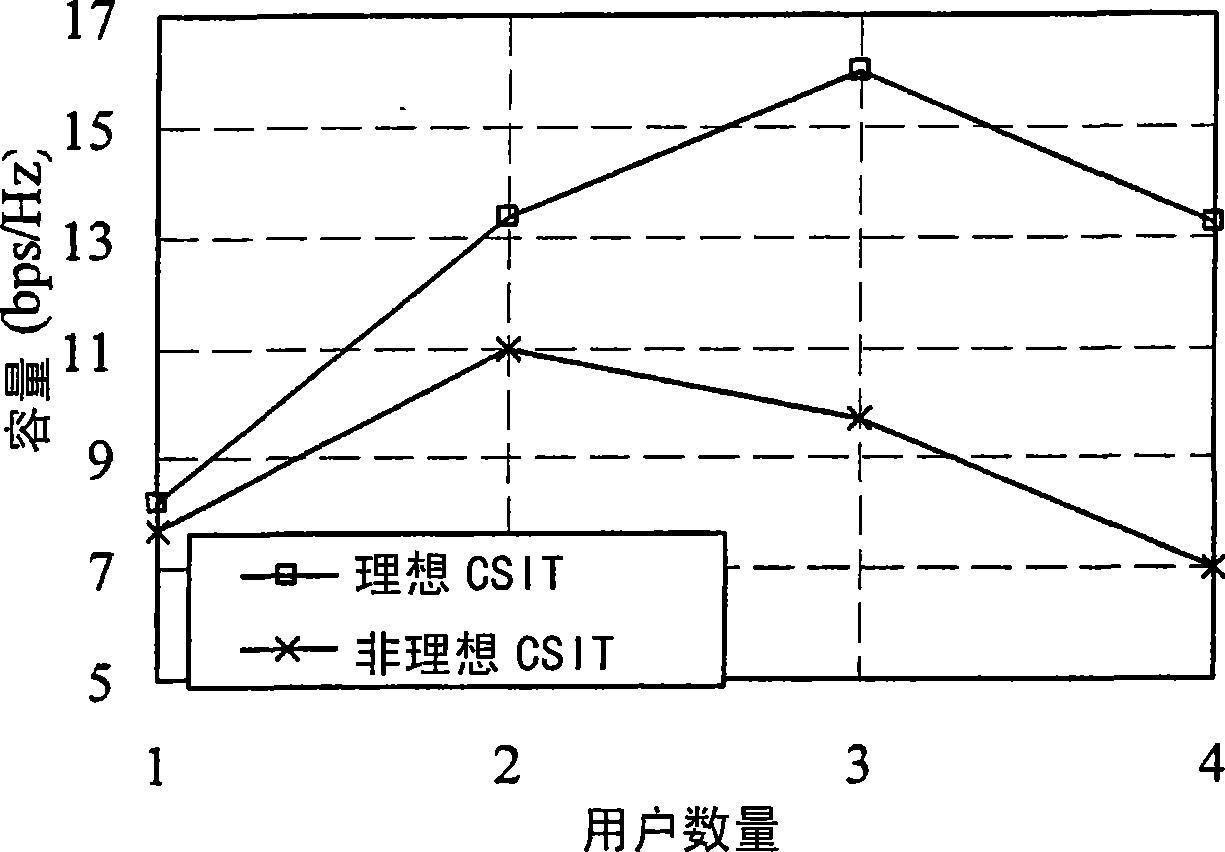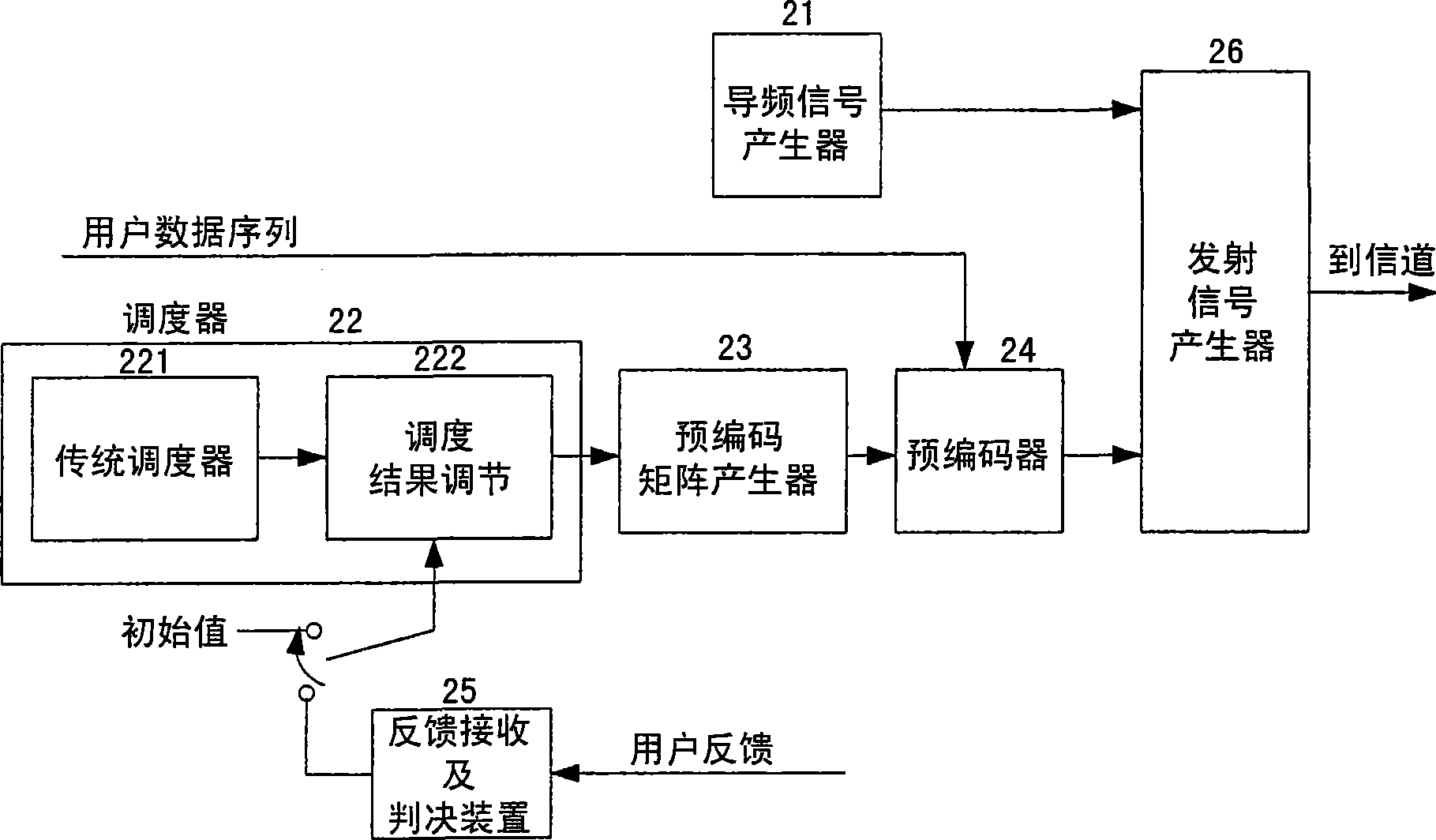Scheduling method and apparatus based on user feedback in multi-user MIMO communication system
A communication system, multi-user technology, applied in the field of scheduling based on user feedback to achieve the effect of performance improvement
- Summary
- Abstract
- Description
- Claims
- Application Information
AI Technical Summary
Problems solved by technology
Method used
Image
Examples
example 1
[0048] Example 1 (CCI measurement results)
[0049] For the CCI measurement criterion, the selected user estimates the CCI power and compares it with the sum of the power of the CCI and the noise to determine whether the CCI is too high. Each user first estimates the power of the desired signal and the interference power from other users. The estimation of interference power requires each user to estimate the equivalent channel obtained by multiplying its own physical channel matrix and other user's precoding matrix. This can be achieved by transmitting dedicated pilots that are orthogonal between users, or by transmitting common pilots and explicit downlink signaling. The user then calculates the average SINR and signal-to-noise ratio (SIR) for its own data stream, and compares the ratio of SINR to SIR with a preset threshold. If the ratio of SINR to SIR is large, it indicates that the interference power occupies a dominant position in the total interference noise power and...
example 2
[0050] Example 2 (total capacity estimation)
[0051] For the total capacity estimation criterion, the selected users predict whether the total capacity will increase or decrease by reducing the number of users. Based on the estimated signal and interference power, each user can estimate the average capacity of each data stream, and by multiplying the total number of data streams by the average capacity of each data stream, the total capacity of all service users can be estimated value. Then, by reducing the interference sources and redistributing the transmission power accordingly, the signal and interference power changes caused by the reduction of the number of users are predicted, and the corresponding capacity changes are estimated. Finally, after comparing the total capacity obtained under different user number assumptions, each user determines whether the current user number should be reduced, and feeds back the result to the sender.
[0052] figure 2 A block diagra...
PUM
 Login to View More
Login to View More Abstract
Description
Claims
Application Information
 Login to View More
Login to View More - R&D
- Intellectual Property
- Life Sciences
- Materials
- Tech Scout
- Unparalleled Data Quality
- Higher Quality Content
- 60% Fewer Hallucinations
Browse by: Latest US Patents, China's latest patents, Technical Efficacy Thesaurus, Application Domain, Technology Topic, Popular Technical Reports.
© 2025 PatSnap. All rights reserved.Legal|Privacy policy|Modern Slavery Act Transparency Statement|Sitemap|About US| Contact US: help@patsnap.com



